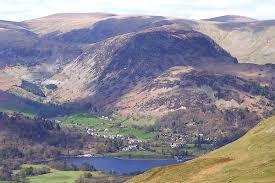-
A Fair Deal for the Rural Communities of the UK1. Rural areas are liable to decline if their infrastructure and services – public transport, education, GP practices, cottage hospitals, street lighting, etc – are not effectively funded and supported. Unless these are of a good standard and accessibility, businesses will not be established in rural areas, those already there will be unable to attract workers, and this will run counter to the government’s own policy (see Truss, E., 2014, “Stimulating Economic Growth in Rural Areas”, Department for Environment, Food and Rural Affairs). 2. Those who live in rural areas are entitled to a reasonable standard of services and national infrastructure. The cuts in grant to local authorities have made it impossible for rural counties to maintain services and infrastructure at a level anywhere near comparable to that provided in metropolitan areas. 3. Some government policies have been implemented without consideration for the impact on rural areas – e.g. the raising of the school/training leaving age to 18, requiring all young people to reach centres of population on a daily basis, while councils are forced to remove subsidy for buses that could get them there and no government provision has been made for this. Thanks to LM and AB282 of 300 SignaturesCreated by Alix Martin
-
Keep kent Frack Free1) It is not sustainable to develop new sources of fossil fuels. If climate change is to be limited to 2°C, which is necessary to avoid catastrophic impacts, 80% of proven fossil fuels reserves cannot be burnt. We note that, with one quarter of the county less than 5m above sea level, Kent is very vulnerable to the rise in sea level that will result from our changing climate. 2) All water supplies in Kent are severely stressed. Fracking requires very large quantities of clean water (almost 19 million litres per frack). There is not an adequate water supply in Kent to sustain fracking. 3) Fracking produces very large quantities of polluted water which contain radioactive elements from deep underground. Water treatment plants cannot safely dispose of this waste. 4) Water supplies can be polluted by fracking due to pollutants leaking from the shale rock, or from wells drilled through an aquifer. There are many cases of water pollution from fracking documented in the USA. 5) Kent’s roads are already busy with many heavy goods vehicles. Development of onshore oil or gas extraction would require many truck movements, increasing the heavy vehicle goods traffic on Kent’s major and rural roads. 6) We value the peace and amenity of Kent’s countryside, and oppose onshore oil and gas development that would industrialise rural Kent. Production from onshore wells is short-lived, requiring many wells to be drilled. 7) Financial analysts, the Chancellor and the onshore oil and gas industry all accept that development of shale oil and gas in the UK will not reduce the price of gas.456 of 500 SignaturesCreated by Tim Valentine
-
Homes Before ProfitOur West Hendon are a group of concerned residents on the West Hendon Estate that believe that the developments taking place benefit private developers at the expense of our community. We fear the development is going to force many people from our community out of the estate and possibly out of London. We are therefore making the following demands of Barnet Council, Barnet Homes, Barratt and Metropolitan Housing Association.616 of 800 SignaturesCreated by Jasmin Parsons
-
Ascot Heath Campaign"The Rough" is an adjacent greenfield site which has been the target of developers for decades. The plan includes re-building Ascot Heath School between the "The Rough" and Ascot Stud Farm, leaving the eastern half of this greenfield site susceptible to creeping status change. It is important because this is green belt designated as a Special Protected Area and because there are other East Berkshire sites with infrastructure (sewers, arterial roads, hospitals) much more suited to new housing developments.925 of 1,000 SignaturesCreated by Bruce Singleton
-
No New Pylons in the Lake DistrictDuring the autumn of 2014 National Grid ran a consultation called "North West Coast Connections" asking members of the public how it should get power from the proposed new Moorside power station in west Cumbria into the high voltage transmission grid. On 17 June 2015 – despite widespread opposition - National Grid announced the decision to take forward its preferred option. This would see huge new pylons and overhead lines in the Lake District National Park and other sensitive protected areas, causing massive damage to the beautiful landscape and wildlife. At 50m tall, the new pylons would be twice the height of existing pylons and more than twice as wide. They would break the skyline from many viewpoints and create a permanent eyesore. National Grid provided an alternative offshore option for the public to comment on. The offshore route would take the powerline underground and then out to sea, where cables laid in the sea bed would link it into the national grid near Blackpool. National Grid has always accepted that this route is feasible, but it is not the route it wanted to take . In a previous public consultation in 2012, there was overwhelming support for the offshore route because it had the least impact on the Lake District. Although the majority of respondents to the 2014 consultation also supported the offshore option, National Grid has disregarded the wishes of the public. A number of stakeholder organisations that supported the onshore option did so with the proviso that National Grid takes satisfactory measures – such as routing cables underground - to mitigate the effects of pylons in sensitive areas. It now appears likely that adequate mitigation will NOT be offered. National Parks were created in order to protect beautiful areas for the people of Britain; we do not want to see 27 miles of 50m tall pylons (connected by multiple conductor wires) in and next to the Lake District National Park. We want your help to persuade National Grid that the offshore option IS the best route because it would both secure our future electricity supplies AND protect the Lake District’s wonderful landscapes. As well as signing the petition, please also consider joining Power Without Pylons (membership free) and Friends of the Lake District. You could also write to newspapers, newsletters and magazines; and if you live in an area likely to be affected, contact your MP and raise concerns with your parish council. As well as this petition, we are currently running a write-in campaign to encourage members of the public to contact National Grid, the MP and Liz Truss the Environment Secretary directly to express their concern and objections to taking the pylons onshore and not considering undergrounding in spite of the damage that pylons would do to the Lake District's landscape. You can access the campaign here: www.saynotopylonsinthelakedistrict.org.uk For more information: www.friendsofthelakedistrict.org.uk/News/response-to-national-grids www.powerwithoutpylons.org.uk www.northwestcoastconnections.com Note: this petition was initiated by Kate Willshaw of Friends of the Lake District ahead of the "North West Coast Connections" consultation, which has now ended. Kate has invited Power Without Pylons to continue to promote it.1,889 of 2,000 SignaturesCreated by graham barron
-
Save the Steps-The steps are an iconic place. They have been used extensively by demonstrators. For instance, in the run up to the Scottish Independence Referendum, the steps were widely used by both "Yes" and "No thanks" campaigners. -The steps are popular. Many people use them as a place to sit, eat their lunch, socialise and listen to buskers. -There aren't many places in Glasgow City Centre to sit. Apart from George Square, there really isn't anywhere you can sit. -The steps provide excellent views over Buchanan Street and beyond. These views are captured by local photographers and artists.16,776 of 20,000 SignaturesCreated by Ben Bookless
-
No Zip Wires in Glenridding - UllswaterThe Lake District is a National Park, renowned for its outstanding beauty worldwide. It would be a travesty & contravention to many LDNP operatives, set back in 2007, in a document named LAKE DISTRICT NATIONAL PARK LANDSCAPE CHARACTER ASSESSMENT AND GUIDELINES, between the LDNPA, National Trust, Friends of the Lake District & Natural England, all of who are responsible for looking after the English Lake District. There might well be room for a new Zip Wire Development in the Lake District, but beautiful Lakeland Valleys should not be part of this plan. There are already 3 or more zip wire developments in the Lakes, which are based in new woodland, planted for growth, where noise generated is muffled by the surrounding environment. Should such an idea be considered, then surely this type of location is more suitable than a quiet & tranquil valley such as Greenside above Glenridding. The National Park themselves have already stated in their planning advice statement issued to the company concerned in April 2014 that they have significant concerns, including • The impact of development upon the landscape and character of the area • Access, traffic, travel and safeguarding the rights of way network • The impact of development upon the Scheduled Ancient Monument • The impact of development upon contaminated land • The impact of development upon ground stability and conditions • The impact of development upon the residential amenity of nearby dwellings (e.g. as a result of noise) • Ecological impacts (particularly impacts upon the SAC and the SSSI) Given that the land on which the starting point of the Zip Wire is proposed is owned by the Lake District National Park authority it is surely sensible for them to stop this idea now before it develops any further. Glenridding is supported in its entirety by the tourist trade - walkers, climbers, runners, mountain bikers, day trippers, and wedding parties - this list is not exhaustive. All of these people come to this area of the Lakes due to its peace, tranquillity and beauty. To introduce a THRILL seeking ride would change drastically the appeal of this area of the Lakes. Undoubtedly it can be argued that some new visitors would arrive in the valley & village, but many other existing visitors would be turned away. However it is not the perceived economic downfalls or benefits that should be the controlling factor here, it should more so be the reality that Glenridding & the English Lake District is one of the most beautiful mountainous areas in the world. People travel from all over the world to come & see it for its natural beauty, peacefulness, manicured farmland & raw nature that is & has been preserved by organisations such as the National Trust, LDNPA, FOLD etc, funded many years ago by people, such as Beatrix Potter & others, to keep this beauty & way of living for all to enjoy. Add this to the fact that many of the local people do not want such a development & there are also houses at the bottom of the valley who would be greatly affected. There are a house & hostels at the top of the valley who would also be directly affected (4 zip wires running directly over or within 25m's of their properties at a frequency of every 5 to 10 minutes as quoted by Mike Turner of Tree Top Treks). It is also worth mentioning the charity organisation who brings under privileged children from city environments to teach them about respecting nature and which may well face eviction from its current home to make way for the Zip Wire. Then there are all the other walkers, climbers & other valley & mountain users who will be affected. There is also the obvious issue of the massive amount of extra traffic to be generated on a stated bridleway (not road) - at least one large mini-bus/land-train every 20 to 30 minutes – this on a bridlepath the National park themselves have been looking to reduce traffic on with local residents in the last few years. Then there is the massive noise disruption and pollution to the valley, the people who live in it & use it, and the bird & animal populations. The list of practical and tangible issues and objections is endless. Overall though the fundamental point remains - such a proposed development is certainly not in keeping with any of the surrounding environment & it is on these grounds & these grounds alone that ANY zip proposal, let alone a Mile long set of 4 parallel Zip Wires should never be considered for Glenridding, or any other such Lakeland Valley or area.2,586 of 3,000 SignaturesCreated by Charles Sproson
-
Protect Historic BloomsburyThis site provides a unique opportunity for a high quality development with a variety of social and cultural uses that reflect the special nature of the Bloomsbury and Covent Garden neighbourhoods. It also offers an opportunity for desperately needed housing and public open space. Instead, the developers propose a huge expansion of an already large building to provide mainly offices and bland chain retail outlets with minimal housing included. This proposal breaches Camden's own planning brief while the scale of the building, expansion of the upper floors and tower on Museum Street will overwhelm the British Museum and St George's Church opposite as well as the delicate scale of the neighbouring streets. Camden Council should reject this crude, bog-standard and greedy development and push for a smaller scale and more interesting use in line with their brief and planning policies. Objections can also be made on Camden Council's planning website under application number 2014/5946/P. http://planningrecords.camden.gov.uk/Northgate/PlanningExplorer17/GeneralSearch.aspx239 of 300 SignaturesCreated by Adam Lester
-
Hackney Downs Zebra CrossingThe junction between Downs Road and Rendlesham Road (E5) badly needs a Zebra crossing. Hundreds of people including huge numbers of children (and cyclists) cross to and from Hackney Downs Park at this point. But these streets are used as a rat-run by local road users, many of whom drive too fast and with little or no regard for pedestrians in the area, and there is no official place for people to cross safely. At present the speed bumps where Rendlesham Road joins Downs Park give pedestrians the illusion that this is a safe place to cross, that cars will give way. The junction is used at busy times of the day when parents are taking their children to the many nurseries and schools in the immediate area, and car users and pedestrians are constantly at odds with one another. Clarification about who has priority to use / cross the road is needed so that everyone stays safe.964 of 1,000 SignaturesCreated by Jonathan Ashworth
-
Don't Bury Dartington Under ConcreteWhilst Dartington Hall Trust care for their historic estate and undertake many worthwhile arts and social projects, they are going against the wishes of almost all the people that they share the parish with. Their stated aims of 'social justice ' and'sustainability' are being ignored locally. We challenge DHT to LIVE YOUR VALUES in Dartington Parish - and not to sell our countryside for cash. Once their proposals are included in our district's plan, our village will be surrounded by houses and destroyed forever.922 of 1,000 SignaturesCreated by Trudy Turrell
-
Highlands and Islands residents against frackingThe main concern here is with the cocktail of chemicals used in the fracking process, many of which are known carcinogens and endocrine disruptors. Although regulations are tighter here than in the US, nevertheless there is still a great deal of uncertainty about the effects of the fracking process on local communites. Fracking will accelerate climate change. Fracking will not lower energy bills. Also studies have shown that methane can be leaked during the process. Methane is a potent greenhouse gas - 20 times more so than CO2. We want a complete ban on fracking in scotland.486 of 500 SignaturesCreated by Marie Macpherson
-
HANDS OFF HOPWAS WOODSWe want the chairman to take real steps to make sure this quarrying doesn't happen. This area of ancient, beautiful woodland, has been used and enjoyed by locals since before the Doomsday Book. This vital natural landscape is used, treasured and cared for on a daily basis by many of the 79,000 residents of Tamworth and more from Hopwas and surrounding areas. The industrial use of this ancient site should not be allowed because it cannot be replaced and because the short and long term damage to the ecosystem in this small woodland will be unsustainable. Planning permission should be refused on many grounds, all relating to Staffordshire County Council's: Best Value Performance Plan Children and Young People's Plan Strategic Plan Sustainable Community Strategy Crime and Disorder Reduction Strategies Development Plan Minerals and Waste Development Framework The objection to development of this natural heritage, extends to a national level, as well, and representation needs to be made to government by our representatives from Staffs Council, on behalf of all the people signing this petition. Lagarge Tarmac are the owners of the wood, and as such, must acknowledge it's value as a site of local and national natural heritage and not attempt to profit from it as a quarry of any kind.1,459 of 2,000 SignaturesCreated by Jo Blick
Hello! We use cookies to improve your experience by providing insights into how the site is being used. Find out more.
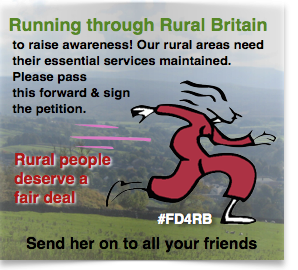
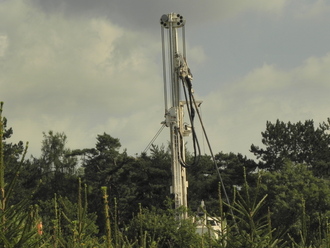
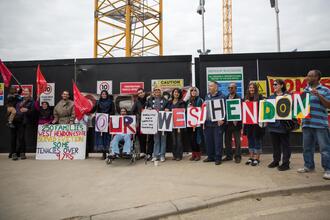
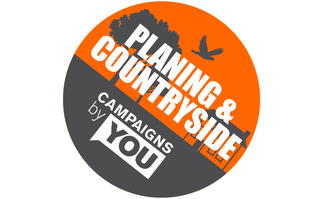
.JPG)

